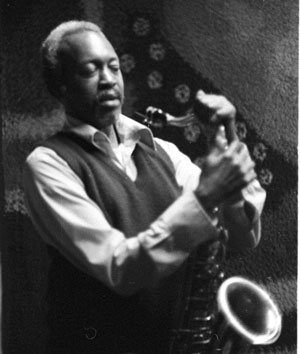Curtain Call – Hank Mobley
A rhythmic "kicker" intro launches this uptempo song, which is further energized by a pedal point in the first four measures of the head. Quintet parts available.
- Recording: Hank Mobley - Curtain Call
- Recorded on: August 18, 1957
- Label: Blue Note (TOCJ 1611)
- Concert Key: A-flat
- Vocal Range: , to
- Style: Swing (uptempo)
- Trumpet - Kenny Dorham
- Tenor Sax - Hank Mobley
- Piano - Sonny Clark
- Bass - Jimmy Rowser
- Drums - Art Taylor
0:00
0:00
Buy MP3
Purchase Curtain Call - Hank Mobley
Purchasing this song through our affiliate links with certain retailers provides jazzleadsheets.com with additional support to help keep us bringing you the best lead sheets available. Thank you!
Video
- Description
- Historical Notes
- Solos
- Piano Corner
- Bass Corner
- Drum Corner
- Guitar Corner
- Inside & Beyond
- Minus You
Hank Mobley's uptempo songs are full of excitement, and Curtain Call is no exception. The four-measure intro establishes a strong rhythmic kick, accenting the "ands" of beats 2 and 4, followed by four measures of drum solo to set up the head. The first four measures of the A section have a pedal point, with an up-and-down bass pattern, which further propels the rhythm section before they switch to 4-feel in the fifth measure. The melody soars elegantly over the pedal point, becoming more rhythmic in the second half of the A section. On the bridge, the melody is again elegant and lyrical.
Several interesting harmonic subtleties are mirrored in the melody. The sixth measure of the A section begins with Dm7♭5 instead of the more expected D♭ major, followed by D♭m7; the melody contains the roots of these chords. They lead to Cm7 in the next measure, which in the second A and C sections is followed by Amaj7 to get back to A♭maj7. Though the melody spells out the Amaj7, the rhythm section often plays E♭7 here on the recording.
Second parts are available; they contain the harmony part on the intro, which has some interesting contrary motion against the rising and falling melody. On the recording, the intro is also played in the first four measures of the trading chorus with the drums. A bass part is available, as well as a piano part showing the melody and rhythmic figures which can also be a condensed score. Drummers can read the lead sheet or the piano part.
Several interesting harmonic subtleties are mirrored in the melody. The sixth measure of the A section begins with Dm7♭5 instead of the more expected D♭ major, followed by D♭m7; the melody contains the roots of these chords. They lead to Cm7 in the next measure, which in the second A and C sections is followed by Amaj7 to get back to A♭maj7. Though the melody spells out the Amaj7, the rhythm section often plays E♭7 here on the recording.
Second parts are available; they contain the harmony part on the intro, which has some interesting contrary motion against the rising and falling melody. On the recording, the intro is also played in the first four measures of the trading chorus with the drums. A bass part is available, as well as a piano part showing the melody and rhythmic figures which can also be a condensed score. Drummers can read the lead sheet or the piano part.
"Curtain Call" was recorded at Rudy Van Gelder's legendary Hackensack Studio.
The bass pedal point figures in the first four measures of the head are similar to those in a later Hank Mobley composition, Stretchin' Out, but in reverse: Curtain Call's bass pattern starts on the upper octave, Stretchin' Out on the lower.
Curtain Call is another example of how Hank Mobley subtly tailored his songs to the styles of his sidemen. Compare the intro with that of A-1 (later used in another Mobley composition, Double Exposure); with a similar rhythmic structure leading to a four-measure drum fill, these intros are Hank's specific way of showcasing drummer Art Taylor. The melody of Curtain Call is also suggestive of trumpeter Kenny Dorham's style, both in the lyrical beginning and the more harmonically intricate phrases in the second half of the A section. Check out Kenny's Speculate for another example of Kenny and Hank playing together in this key at a similar tempo.
The bass pedal point figures in the first four measures of the head are similar to those in a later Hank Mobley composition, Stretchin' Out, but in reverse: Curtain Call's bass pattern starts on the upper octave, Stretchin' Out on the lower.
Curtain Call is another example of how Hank Mobley subtly tailored his songs to the styles of his sidemen. Compare the intro with that of A-1 (later used in another Mobley composition, Double Exposure); with a similar rhythmic structure leading to a four-measure drum fill, these intros are Hank's specific way of showcasing drummer Art Taylor. The melody of Curtain Call is also suggestive of trumpeter Kenny Dorham's style, both in the lyrical beginning and the more harmonically intricate phrases in the second half of the A section. Check out Kenny's Speculate for another example of Kenny and Hank playing together in this key at a similar tempo.
Related Songs
Email Send Curtain Call to a friend
Send this page to a friend via email. Add your name or email in the first field. In the second, add one or more email addresses, separated by a comma.

Hank Mobley
July 7, 1930 – May 30, 1986
Hank Mobley is one of the most acclaimed tenor saxophonists in modern jazz history. He is recognized by musicians and critics alike as one of the most important and eloquent jazz instrumentalists of all time. He recorded well over 100 of his own original compositions and left an indelible mark on the post-bop jazz scene. Read more...
There was a problem.
...

